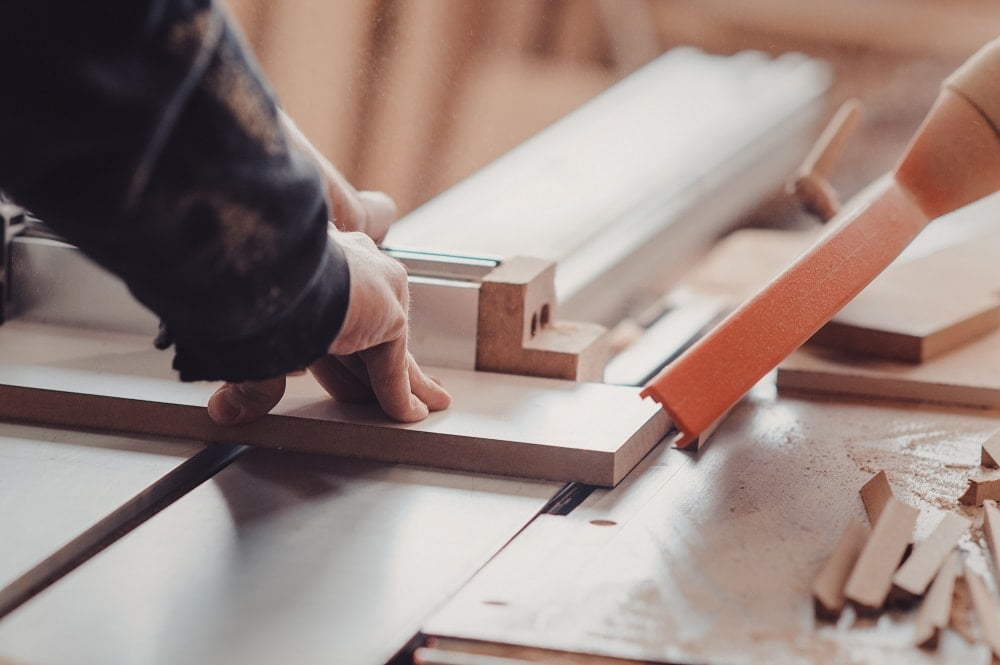Are you new to woodworking and unsure where to start? As a beginner woodworker, you may feel overwhelmed by the vast amount of information and techniques available. Don’t fret. In this guide, we will break down the essential steps and tips to help you get started on your woodworking journey.
As a beginner woodworker, the first step is to familiarize yourself with the basic tools and equipment needed for woodworking projects. From measuring tools to cutting implements, having the right tools at your disposal can make all the difference in the quality of your work. Understanding how each tool functions and when to use them will set a solid foundation for your woodworking skills.
Furthermore, it is crucial for beginners to grasp the different types of wood available and their uses in various projects. Each type of wood has unique characteristics that can affect how it is cut, shaped, and finished. By understanding these differences, you can choose the right kind of wood for your projects and achieve better results. Stay tuned as we delve deeper into these topics in our comprehensive guide for beginner woodworkers.
Essential Tools and Equipment for Beginner Woodworkers
As a beginner woodworker, one of the most important aspects to consider is having the right tools and equipment. Investing in quality tools will not only make your projects easier to complete but will also ensure that they turn out more professional-looking.
Some essential tools for beginner woodworkers include a measuring tape, a circular saw, a power drill, a hammer, chisels, and clamps. These basic tools will help you tackle a wide variety of woodworking projects and lay the foundation for expanding your tool collection in the future.
In addition to hand tools, beginner woodworkers should also consider investing in some safety equipment. Safety goggles, ear protection, and dust masks are crucial for protecting yourself while working with wood. A pair of high-quality work gloves can also help prevent splinters and cuts on your hands. It’s important to prioritize safety when working with power tools or sharp objects to prevent accidents or injuries.
When starting out as a beginner woodworker, it’s easy to feel overwhelmed by the sheer number of tools and equipment available on the market. To avoid unnecessary expenses, focus on acquiring only the essentials that you need for your current project.
As you gain more experience and take on more complex woodworking tasks, you can gradually add new tools to your collection. Remember that practice makes perfect, so don’t be discouraged if you don’t have all the latest gadgets right away – focus on honing your skills with what you have and gradually build up your tool arsenal over time.
Understanding Different Types of Wood and Their Uses
Woodworking involves working with various types of wood, each with its own unique characteristics and uses. As a beginner woodworker, it is important to understand the different types of wood available and how they can be best utilized in your projects. Here are some common types of wood along with their characteristics and uses:
- Pine: Pine is a softwood that is easy to work with, making it ideal for beginners. It is commonly used for framing, construction, and furniture making.
- Oak: Oak is a hardwood known for its strength and durability. It is often used in flooring, cabinets, and furniture due to its beautiful grain patterns.
- Maple: Maple is another hardwood that is popular for its light color and smooth texture. It is often used in cutting boards, musical instruments, and furniture.
When selecting wood for your projects, consider factors such as the desired aesthetic, strength requirements, and budget constraints. You can visit a local lumberyard or woodworking store to see and feel different types of wood in person before making a decision on which materials to use.
Remember that understanding the characteristics and uses of different types of wood will play a crucial role in the success of your woodworking projects. By familiarizing yourself with the properties of each type of wood, you will be able to make informed decisions when selecting materials for your creations.
As you continue on your woodworking journey, experiment with different types of wood to expand your skills and knowledge in working with various materials. With practice and experience, you will become more confident in choosing the right type of wood for each project and creating beautifully crafted pieces that showcase your growing expertise as a woodworker.
Basic Woodworking Techniques and Skills to Master
Woodworking is a craft that requires patience, practice, and precision. As a beginner woodworker, it is essential to start by learning and mastering some basic woodworking techniques and skills. One of the fundamental skills to focus on is measurement and marking. Accurate measurements are crucial in woodworking to ensure that pieces fit together properly. Invest in quality measuring tools such as a tape measure, combination square, and marking gauge to achieve precision in your projects.
Another important technique to master as a beginner woodworker is cutting. Whether you are using a handsaw or power tools like a table saw or circular saw, learning how to make straight and accurate cuts is essential for successful woodworking projects. Practice using different cutting tools and techniques under the guidance of more experienced woodworkers to improve your skills.
In addition to measurement and cutting, learning how to join pieces of wood together effectively is a key skill for any woodworker. There are various ways to join wood, including butt joints, miter joints, dovetail joints, and more.
Each type of joint has its own strengths and weaknesses, so take the time to experiment with different types of joinery techniques to understand what works best for your projects. Taking a hands-on approach and practicing these basic woodworking techniques will help you gain confidence and proficiency in working with wood.
| Woodworking Technique | Description |
|---|---|
| Measurement and Marking | Accurate measurements are crucial in woodworking; invest in quality measuring tools. |
| Cutting Techniques | Master straight and accurate cuts using handsaws or power tools like table saws. |
| Joinery Skills | Learn different types of joinery techniques such as butt joints, miter joints, and dovetail joints for effective joining of wood pieces. |
Safety Tips and Precautions Every Beginner Woodworker Should Know
Importance of Safety in Woodworking
Safety should always be a top priority for any beginner woodworker. Working with power tools, sharp objects, and heavy machinery can pose risks if proper precautions are not taken. Before starting any woodworking project, it is crucial to familiarize yourself with safety measures to prevent accidents and injuries. Remember, it is always better to be safe than sorry when working with woodworking tools.
Protective Gear and Equipment
One of the first things every beginner woodworker should invest in is protective gear. This includes safety glasses or goggles to protect your eyes from flying wood chips, dust masks to prevent inhaling harmful particles, ear protection to reduce noise levels from machinery, and gloves to protect your hands during handling of sharp tools and materials. Having the right protective gear can significantly reduce the risk of injury while working on woodworking projects.
Workshop Setup and Organization
Another important aspect of safety in woodworking is maintaining a clean and organized workshop. Cluttered workspaces can increase the chances of accidents by tripping over misplaced tools or materials. Make sure your work area is well-lit, properly ventilated, and free from obstructions.
Store sharp tools in a secure location when not in use, unplug power tools after each use, and keep flammable materials away from heat sources. By keeping your workspace organized and hazard-free, you can create a safer environment for woodworking projects.
Designing Your First Woodworking Project
Choosing Your First Project
As a beginner woodworker, selecting the right project is crucial to your success. Start with something simple yet practical, like a basic shelf or small box. These projects will help you build fundamental skills while also giving you a sense of accomplishment. Consider the tools you have on hand and the level of difficulty before diving into your first woodworking project.
Gathering Materials and Measurements
Once you have decided on your first project, take the time to gather all the necessary materials. Visit your local hardware store or lumberyard to select the type of wood that best suits your project. Measure everything carefully and double-check your dimensions before making any cuts. Remember, accuracy is key in woodworking, especially for beginners.
Planning and Execution
Before making any cuts or assembling any pieces, create a detailed plan for your project. Sketch out the design and mark each step of the process to avoid confusion. Take it one step at a time and don’t rush through any part of the project. As a beginner woodworker, it’s important to focus on precision and patience in each stage of the woodworking process.
By following this step-by-step guide for designing your first woodworking project, you can set yourself up for success as a beginner woodworker. Remember to start with simple projects, gather all necessary materials, carefully plan out each step, and pay close attention to measurements and details along the way. With practice and dedication, you’ll soon be on your way to mastering more advanced woodworking techniques and creating beautiful pieces that showcase your growing skills.
Mistakes to Avoid as a Beginner Woodworker
As a beginner woodworker, it is essential to be aware of some common mistakes that can occur when starting out in this craft. One of the main mistakes to avoid is not having a plan or design in place before starting a project.
It is crucial to have a clear idea of what you want to create, including dimensions, materials needed, and the overall look of the finished piece. Without a plan, beginners may end up wasting materials, time, and effort on a project that does not meet their expectations.
Another mistake that beginners often make is neglecting to take proper safety precautions while working with wood and tools. It is important to always wear appropriate safety gear such as goggles, gloves, and ear protection when using power tools or handling sharp objects. Additionally, make sure your workspace is well-ventilated and free from clutter to prevent accidents.
Lastly, one common mistake that beginner woodworkers can make is rushing through a project without paying attention to detail. It is important to take your time with each step of the woodworking process, from measuring and cutting the wood to assembling the pieces together. By being patient and meticulous, you will achieve better results and improve your skills over time.
| Common Mistakes | How to Avoid |
|---|---|
| Not having a plan or design | Create a detailed plan before starting any project |
| Not following safety precautions | Always wear protective gear and maintain a safe workspace |
| Rushing through projects | Take your time and pay attention to detail for better results |
Finding Inspiration and Resources for Your Woodworking Journey
As a beginner woodworker, finding inspiration and resources for your woodworking journey is essential to keep you motivated and continuously improving your skills. Whether you are looking for project ideas, tips and tutorials, or community support, there are various sources you can explore to enhance your woodworking experience. Here are some valuable resources to consider:
- Woodworking Books and Magazines: Invest in books or subscribe to magazines that offer step-by-step instructions, project plans, and tips from experienced woodworkers. These resources can provide valuable insights and inspiration for your own projects.
- Online Woodworking Communities: Join online forums, social media groups, or websites dedicated to woodworking. You can connect with fellow woodworkers, ask questions, share your work, and learn from others’ experiences. This sense of community can be invaluable as you navigate the world of woodworking.
- Woodworking Classes and Workshops: Consider enrolling in woodworking classes or workshops in your area. Hands-on instruction from a skilled woodworker can help you improve your techniques and gain confidence in handling tools and materials.
Moreover, visiting local woodworking stores or attending trade shows and exhibitions can also provide you with a wealth of information and inspiration. You may have the opportunity to see demonstrations by professional woodworkers, discover new tools and accessories, or even participate in hands-on activities. By immersing yourself in the woodworking community both online and offline, you can stay motivated and continue learning as you progress on your woodworking journey.
Remember that inspiration can come from unexpected places – nature, architecture, art, or even everyday objects around you. Keep an open mind and take the time to observe the world with a creative eye. Drawing inspiration from diverse sources will not only fuel your passion for woodworking but also help you develop a unique style that sets your projects apart.
Next Steps
As a beginner woodworker, the journey does not end with just completing your first few projects. Building on your skills is essential to further hone your craft and take on more challenging woodworking projects. One of the best ways to improve as a woodworker is by continuously practicing different techniques and experimenting with new designs. Don’t be afraid to push yourself out of your comfort zone and try something new.
Another crucial step in building on your skills as a beginner woodworker is seeking out additional resources and learning opportunities. Whether it’s through online tutorials, woodworking classes, or joining a local woodworking community, there are plenty of ways to further educate yourself in this craft. Additionally, reaching out to experienced woodworkers for advice and guidance can provide valuable insight into improving your skills.
Lastly, don’t forget the importance of patience and persistence when it comes to growing as a woodworker. Like any skill, woodworking takes time and dedication to truly master. Embrace each project as a learning experience and focus on refining your techniques with every piece you create. By staying committed to improving your skills and seeking out opportunities for growth, you’ll continue to progress in your woodworking journey as a beginner woodworker.
Frequently Asked Questions
What Do I Need for Beginner Woodworking?
Beginner woodworking requires a few essential tools like a hammer, tape measure, saw, chisels, and sandpaper. Additionally, having safety gear such as goggles and gloves is crucial to protect yourself from potential injuries.
What Are 4 Basic Skills Woodworkers Should Have How Can You Be Good at Woodworking?
Four basic skills that woodworkers should have are measuring accurately, using hand tools effectively, understanding different types of wood, and mastering joinery techniques. To excel in woodworking, practice is key – honing these skills through consistent hands-on experience will lead to improvement.
Can I Teach Myself Woodworking?
Yes, it is possible to teach yourself woodworking with the abundance of online resources available today. Utilize tutorials, books, and videos to learn different techniques and gain knowledge about tools and materials.
Starting with simple projects and gradually advancing to more complex ones will help you develop your skills over time. Remember that patience and persistence are key when teaching yourself a new skill like woodworking.

Hi everyone! I’m a woodworker and blogger, and this is my woodworking blog. In my blog, I share tips and tricks for woodworkers of all skill levels, as well as project ideas that you can try yourself.





